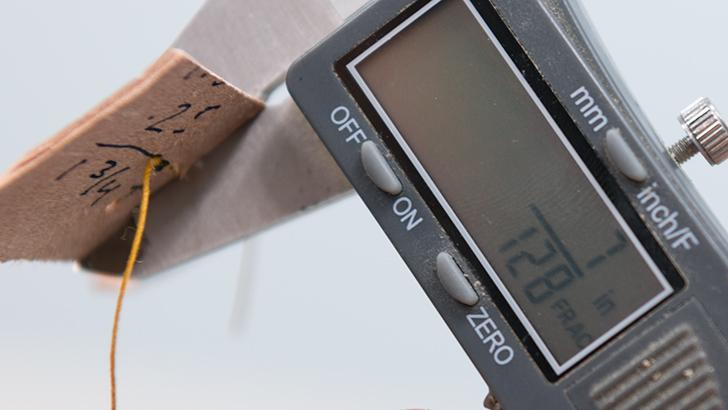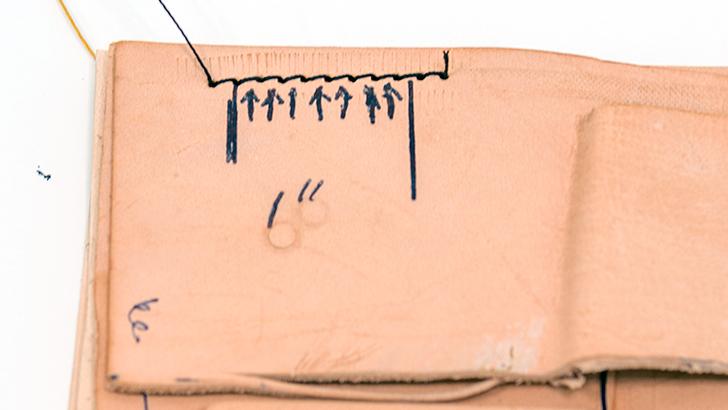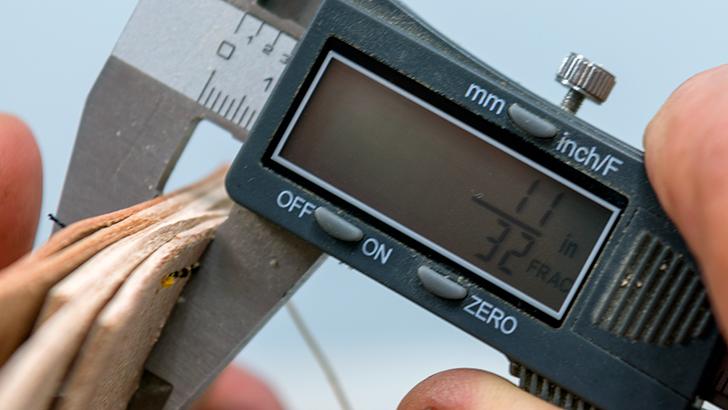
kgg
Contributing Member-
Posts
3,300 -
Joined
-
Last visited
Content Type
Profiles
Forums
Events
Blogs
Gallery
Everything posted by kgg
-
That is a really nice restoration. kgg
-
You didn't mention the colors you would like. Two things that can make your project, needles and thread. Buy brand names for both. Needles: V69 thread minimum size 16 V92 thread minimum size 19 V138 thread minimum size 22 Thread: The brand of thread that has never failed me is American & Efird ( www.amefird.com ) which is made in both Canada and the USA. These guys have put some engineering effort into designing their threads. For the type of thread and specifications go to ( www.amefird.com/products-brands/industrial-sewing-thread/ ) and select Fiber type or Application too see which thread specification meets your needs. For colors go to their color card section ( www.amefird.com/color/color-cards/ ) for that type of thread. In Canada it can be purchased directly and I assume it would be the same in the USA. Their threads are not cheap but definitely beats not having to deal with the frustration and eventual throwing out of a spool of cheap stuff because of inconsistencies or quality. I think they supply thread in 1 lb sizes not in 8 oz spools which maybe a downside for some. kgg
-
Interesting disclaimer. I guess you would never put it on something like a old Singer 29k patcher with the old case iron hand wheel installed on the end of the main shaft. The Sailrite Monster wheel weights about 7 pounds versus their PRO Balance Wheel is roughly the same size but made of aluminum. This leads me to think run on caused by flywheel momentum maybe a problem with these sorts of motor designs. I couldn't find the same sort of disclaimer for the Reliable 6000 motor. I run on my machines 550 watt brushed motors with a the speed limiter dial and pot and so far have not had a problem. kgg
-
I am glad you are enjoying your new machine. Something to keep in mind with the stitch length is it will change slightly (more stitches per inch) as the thickness of material increases. kgg
-
This one even shocked me, $2500 for a Singer Featherweight 222. Kijiji ad in Ontario, Canada ( www.kijiji.ca/v-art-collectibles/ottawa/singer-featherweight-222/1588802786 ) kgg
-
Nice simple straight forward useful solution. kgg
-
That is great news. kgg
-
Thank you. I agree, a servo is the way to go for motorizing the machine for control but I was hoping there was an original motor and mounting plate to electrify the machine available not so much for operation but more for looks. I do have have a spare servo motor but I really would like to keep it as original as possible. I just this last week acquired another much newer (1998) Singer 29-71 without a table that I am overhauling. Basically it is just about completed, just drip drying from it's redneck oil bath and waiting to be placed on a table. This machine originally came from Landis and has an additional manufacturing plate riveted to the front of the base for Landis's serial number and date of manufacture. This machine had a domestic type 1 / 15 hp, 120 v 50 rpm motor combined with a small gear box controlled by a domestic type foot pedal. The rear of the machine base has five holes drilled and tapped for mounting the motor unit to the machine, probably done by Landis. I guess this was their version of being portable. The motor works, it was supposedly burnt out but I narrowed the problem down to the foot pedal. Someone at some point tried to "fix" the foot pedal and left a part off as well as shorted it to the metal foot pedal housing (burn marks). Comparing both machines I think the fit / finish as well as the internal gears on the older 1949 Singer are much better casing quality then the 1998 model. I think there was a decline in quality as Singer started to decline when comparing these two machines. kgg
-
Looks like great speed control which can come in handy at times. The down side for some maybe the cost at $299 US or $375 CAD plus shipping. kgg
-
ID this Singer / Seiko Double Needle Cylinder Machine
kgg replied to Constabulary's topic in Leather Sewing Machines
To me it looks like it is maybe a variant of the Consew 387 RB-2 or the Siko Lsw. kgg -
Latest Work 1851 Navy Colt Holsters
kgg replied to JWheeler331's topic in Gun Holsters, Rifle Slings and Knife Sheathes
Nice work. kgg -
I have looked at the Consew website (Consew.com) and can not find any information there that would suggest the RB5 is factory rated for V207 for the top thread and in the bobbin. I also couldn't find what the max needle size the machine is factory rated for. The Juki's rate their machines at V138 like for the 1541S for the top and bobbin thread but if you notice that the max factory rated needle they can handle is a size 24 needle which can handle V207. I think they allow the extra sized needle to allow V138 to work properly in thick heavy materials. So I think but have not tried it myself that the Juki could probably handle V207 thread with softer materials in both the top and bobbin. Maybe someone else can confirm this. The funny thing is my Juki 1181N has max factory rated needle size of #23 needle which is good for V138 but the machine itself is factory rated for V92 yet came out of the unopened box with V138 threaded in the top and bobbin. The bottom line is thread capacity can be confusing and I think mainly depends on what / how thick you want to sew. kgg
-
You can get them from American & Efird directly or Wawak ( https://www.wawak.com/Thread/Thread-By-Use/Bobbin/redi-wound-nylon-style-g-bobbins-144-bobbinsbox/?sku=THD122WH ) at about $38 US for 144 in a box. kgg
-
Since the machine was used in a shop one has to wonder why they are selling it so I agree it is probably a wiser decision to but the new Consew.
-
Yes very interesting. It made me go back and do a second test with the same thread for the top thread and in the bobbin using a piece of 7/128" (1.38mm) veg tan. I got 6 1/2 stitches to the inch. Photo 3: Side by side of veg tan from first test with 11/ 32" (8.73mm) and the second test with 7/128" (1.38mm) side by side kgg
-
For the wallets a flatbed is probably your best bet but another option maybe cylinder bed machine with a flatbed attachment. The Juki line of machines are excellent machines and are typically what the clones are copied after. The test would be take some of what you what to sew with the thread you are planning on using and test drive both machines. See which one works best for your needs / wants. Be aware buying secondhand like most things is always a gamble and more for the person willing to do their own repairs. If you are not someone who is willing to do some repairs buy new. If the Juki 1508 is in good to excellent "working" condition, that has not been used in a factory setting and will do what you what / need it would be my preference. I have a Juki 1541S and a 1181N. For light stuff the walking foot 1181N does a nice job where as to do the same job on light stuff with the 1541S it needs to be dumbed down. The 1508 I would imagine would be more severe then the 1541S. As far as quality / accessories / replacement parts goes Juki I think far exceeds most others. Remember no one machine can do everything. Buy once, Cry once kgg
-
The Juki LU-562 and LU-563 and LU-563-3 are rated for a #23 needle (Page 3 of Juki LU-562 and LU-563 Instruction Manual) so that means their max rated bobbin and top thread size is V138 thread. You maybe able to use V207 in the top and V138 in the bobbin but V207 in the bobbin may cause problems. To get V277 for the top thread you would need a minimum #25 needle which probably will not fit, other parts may or may not be strong enough to handle the strain and the bobbin probably will not accept it. kgg
-
Lovely work. kgg
-
Thank you all. Just an update. I finally moved the Singer 29k-71 upstairs this morning to it's new resting space and changed the needle from the original 29 x 3 system to a 135 x 16 #20 needle for a quick test. Thanks to Wiz's info it was a straight swap. I also ran some V138 through which is I think the lowest size that will accept the V138 thread but doesn't really leave enough space for the bobbin thread too be pulled up. The propose of the test run was to see i) how close the number of stitches per inch it would sew versus what the manual said it could do. Manual says: 7 to 15 to the inch. depending on material being stitched and operations performed. ii) to see if it could sew above the normal 1/4" max. I hadn't adjusted the bobbin thread tension which also contributed to the bobbin thread not being properly pulled up. Photo 1: Shows that it will sew 7 1/2 stitches per inch. I'm pleased I can live with that. Photo 2: Shows a how thick the veg tan scraps were that I hobbled together. 11/ 32" or 8.73mm I'm happy with this as well. Comments always welcomed. kgg
-
I changed the original needle with a 135 x 16 #20 with some V138 thread for a test run on my 1949 Singer 29k -71. It work perfectly. Thanks Wiz kgg
-
Just a simple swap out . kgg
-
I think a couple of problems: To small a needle, so there isn't really enough space in the hole the needle made and you don't have enough top tension which until you use the right needle you will not be able to properly get. A # 18 needle is good for a much smaller thread Tex 70 (V69). kgg
-
You are using to small of a needle for Tex135 ( V138 ) thread should be a #22 for fabric / thin leather ; #23 for leather; and sometimes depending on how tough and thick #24. Check out " tolindsewmach.com/thread-chart.html " for what size of thread goes with what needle size. kgg
-
I am looking at figuring out a method of installing a simple domestic sewing motor to the rear base of the machine. Something along the lines of what some have done with the 29k-4's but the 29k-71 does not have a mounting hole and I don't want to drill one in the machine or the base. If anyone has a suggestion or knows of an adapter plate of some sort I would appreciate the info. kgg
-
I just finished giving I'M a redneck formula bath the crap that that came out was black to say the least. The rear gears and roller bearings have almost no wear which surprised me. Now I'm moves with a light touch on the hand wheel. For shits and griggles did a unscientific noise level measurement. We used a CEM DT-805 Digital Noise Meter to measured the normal db level where the machine is and measured the level as it went through it's hand cranked cycles. Normal quiet noise level in the area was 38 db and again with the machine going through multi hand cranked cycles peaked a 52 db so the machines peak noise was 14 db. Putting that into perspective normal conversation in the machine area was measured at 72 db. I figure I'M is a pretty quiet sort of a guy. kgg





